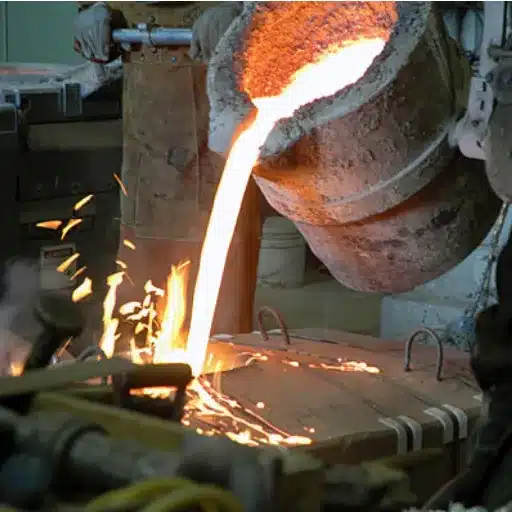Fluid flow control systems must have a proper check valve put in place as the wrong choice could lead to very serious challenges in regards to efficiency, safety, and performance. Check valves enable flow in one direction and block reverse flow, which can potentially be harmful to devices and operations. Knowing which check valve is the most usable from the wide range provided in the market can be difficult as their application features are highly competitive. This guide provides key advantages and disadvantages of check valves so that you don’t make uninformed decisions based on your system needs. This balanced overview will improve selection outcome and system reliability, whether you’re a plant engineer, system designer, or maintenance technician.
What Are Check Valves and How Do They Control Flow?
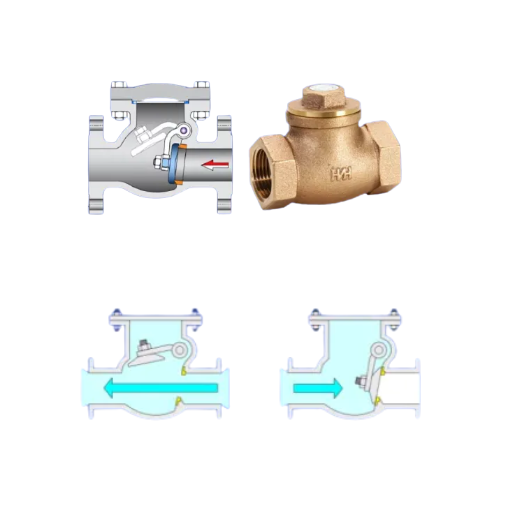
A check valve is a mechanical device that enables a fluid to flow in a single direction, preventing any backflow from occurring. This is done through an internal mechanism such as a disc or a ball which opens when fluid moves forward and automatically shuts when the flow reverses. Check valves are extensively used in unidirectional flow applications like in pipelines, pumps and other industrial machinery. They are also referred to as non-return valves, as these types of valves do not rely on external force or manual intervention, instead using fluid pressure to operate.
A Closer Look At Check Valves and One Way Flow of Fluids
A check valve is a type of valve that allows fluid to flow in one direction only and is made up of internal parts like disks, spheres, or plates. The valve opens because fluid flowing to the valve inlet pushes the opening further. Reverse flow is also possible, in which case the internal part must close very fast to avoid reverse flow and damage to the downstream equipment.
The materials check valves are made from include stainless steel and PVC as these materials are highly corrosion resistant and durable, especially for pumps with abrasive or chemical fluids. Depending on the type, size and design of a valve, the flow rates and pressure drops change. An example is swing check valves that are said to have lower pressure drops than lift check valves because they have less resistance in the pathway. Moreover, the cracking pressure, or the minimum downstream pressure that needs to be applied for the valve to open, is equally important for system efficiency fulfilling other specifications. More recently developed check valves are designed to combat water hammer effects, which occur when the valve closes too quickly because of reverse flow, causing damage unless dealt with. Such developments enable better performance in oil and gas, water treatment, and chemical processing sectors.
Most Common Sectors In Which Check Valves Are Used
- Oil and Gas Industry: Check valves are used in offshore drilling and refining processes to extract and refine natural gas and oil. They are also important for pipe lines transporting crude oil and natural gas. Check valves allow for unidirectional flow only, preventing the reverse flow from damaging pumps and compressors.
- Water Treatment Facilities: Check valves are important in municipal and industrial water treatment facilities. They prevent contamination through backflow in the clean water and wastewater pipelines, greatly improving public health and system integrity.
- Chemical Processing: Check valves are critical in handling aggressive chemicals. These valves guarantee all process requirements are met regarding forward motion and disallow backflow to prevent cross-contamination or reactions.
- Power Generation: Other Facilities such as nuclear and thermal power plants utilize check valves to control the flow of water in cooling systems. These check valves keep the water from regressing back, which can damage the sensitive turbines.
- Pharmaceutical Manufacturing: In this industry, check valves are used with clean-in-place (CIP) systems. These valves help maintain the system’s sterility and control the flow of liquids, eliminating cross-contamination.
- HVAC Systems: Similarly, heating, ventilation, and air-conditioning systems use check valves to ensure constant air or fluid during operation. This is specifically true in chiller systems and heat pumps.
- Marine Applications: Ballast water management systems utilize bilge and engine pumps that have check valves for effective fluid control and spill prevention.
Every industry has unique requirements for check valves’ specific materials, construction styles, and configurations to reliably function under specific temperatures, chemicals, and pressure conditions while sustaining operational efficiency and life expectancy.
The Role of Check Valves in Capping Flow in Control Systems
Check valves are fundamental in control systems as they allow fluid to be conveyed in one direction only and block flows in the other direction with a specially designed system. These valves always have some sort of movable disk, hollow sphere, or similar part that is opened by the forward motion of the fluid. If the flow starts moving in the opposite direction, the lower pressure at the outlet side, coupled with higher pressure at the outlet side, leads to the valve mechanism being firmly shut so that no fluid flows in the reverse direction.
Modern advances in material science and valve design have greatly enhanced the reliability and efficiency of check valves. For instance, high-performance elastomers and corrosion resistant alloys have improved the durability of certain valve parts in extreme conditions, like high-pressure systems over 3000 psi and high temperatures over 500°F. Additionally, new technologies such as spring-loaded designs allow for faster and more consistent closure rates, preventing backflow even in changing pressure conditions.
Survey data from various industries suggests that a lack of proper reverse flow prevention causes operation inefficiency, equipment damage, or even contamination in more sensitive areas like chemical processing and water treatment. Check valves with tailored response times and predetermined custom flow rates are crucial to sustaining uninterrupted operations in these situations, which proves their importance in modern control systems.
What Are the Different Types of Check Valves Available?
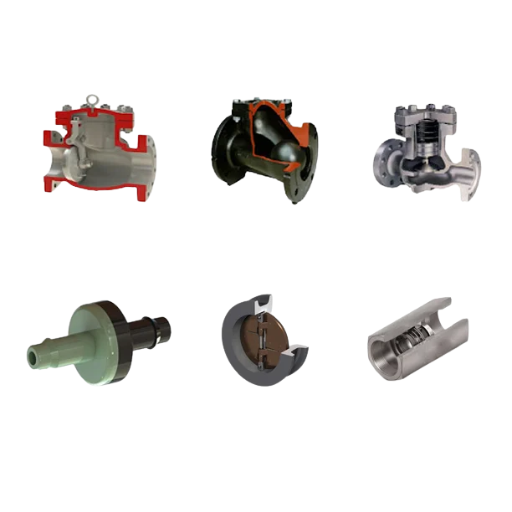
There are some common types of check valves, each intended for specific purposes:
- Swing Check Valves: These are equipped with a hinged disk that opens with forward flow and closes with reverse flow. They are reliable, simple, and are commonly used in pipelines.
- Lift Check Valves: These have a disc that moves up when placed on the seat in forward flow, but returns to the seat when there is reverse flow. They are ideal for high pressure systems.
- Ball Check Valves: These contain a sphere that rotates about the valve housing. Their compact size makes them suitable for low pressure applications.
- Diaphragm Check Valves: Flexible diaphragms seal off backward flow and open when forward flow occurs. They are useful for preventing contamination in sanitary systems.
- Dual Plate Check Valves: These are also known as double-door valves. They feature two plates that open and shut with changes in flow. They are known for low-pressure loss and improvement in system strength.
Regardless of the type, selection is done based on flow conditions, pressure rates, and system requirements.
Fundamental Differences Between Swing Check Valves, Ball Check Valves, and Disc Check Valves
The range of possibilities presented by swing check, ball check, and disc check valves is amazing to contemplate as each has its own perks depending on the requirements. To best suit lower velocity systems, swing check valves utilize a hinged disc that swings to allow forward flow and then returns to its seat during reverse flow, creating the desired seal without the need of external pressure. However, the design does result in a greater reduction of pressure which is not ideal for high-velocity systems. They also struggle with systems that experience frequent reversals in flow due to possible hinge mechanism wear.
In ball check valves, the sealing element that is used is a spherical ball which moves freely within the valve body. As flow pushes forward, the ball is shifted away from the valve seat, but if the flow is reversed, the ball seals against the valve seat. This configuration guarantees leak proof systems, especially when settled matter or thick fluids are present since the ball can also clean small particles. This type of valve may not be the best option if a system struggles with self induced pressure imbalances due to its internals.
Like swing check valves, check valves also use a disc. However, in this case, the disc is held by a spring and directly responds to the direction of the flow. Because of this design, check valves have fast closure during reverse flow. The withstandance of the water hammer makes check valves proffer a lot of benefits in high-pressure systems. In comparison to swing check valves, disc check valves have a more compact design which allows for efficient vertical use. They are also more efficient than swing valves in horizontal mounting positions. In systems where the head pressure is expected to be high, springs are best. Heavier springs obviate the need for a valve positioner, but they do make the valves difficult to maintain. More precisely, the cost of maintenance is increased.
Every valve can be calculated and paired with a system depending on its Cv values, which are the flow coefficient, and counting the pressure loss for each type. However, careful analyses must observe details such as the velocity of the flow, the allowable drop of the pressure, the constituent of the fluid, and the configuration of the installation.
Lift Check, Wafer Check and Diaphragm Check Valves: Here’s Everything You Should Know
A guided disc lifts and moves vertically up and down within the valve body to prevent backflow in lift check valves. These valves are mostly used in high-pressure applications and provide good sealing ability to contain leakage. Lift check valves are made from steel or cast iron and are ideally suited for high-temperature fluids. Performance specification usually includes low pressure drop because of the linear flow path and has a Cv value of 20 to 200, depending on the size and configuration of the valve.
Unlike others, wafer check valves have a compact design, which makes them easy to put between flanges in the pipeline system. A spring-loaded disc is used to limit backflow and is used in systems where weight is a constraint. These types of valves can perform better in clean liquids and gas applications. There is a very low pressure drop across wafer check valves, and wherever there is a recovering rate, internal geometry is streamlined.
Diaphragm valves also have a diaphragm that enables closing and opening according to fluid pressure. They are well suited for applications requiring abrasive or corrosive media as the diaphragm protects the valve mechanics from the fluid, increasing durability and longevity. With a pressure rating below 150 psi, these valves facilitate low-pressure systems. Moreover, they are effective towards contamination control in a sanitary system, which is typical in pharmaceutical and food processing industries.
When is it Appropriate to Use a Foot Valve as a Check Valve
These valves should be used in pumping systems that need to maintain prime in the pump. They work best at the inlet of a suction line where they prevent backflow and maintain the pump in an operational state. Common applications involve wells, irrigation systems, and other water and fluid management systems where dependability is vital. With a foot valve, an integrated strainer can also assist with a balance of system maintenance and performance by preventing debris from clogging the system.
What Are the Key Advantages of Using Check Valves?
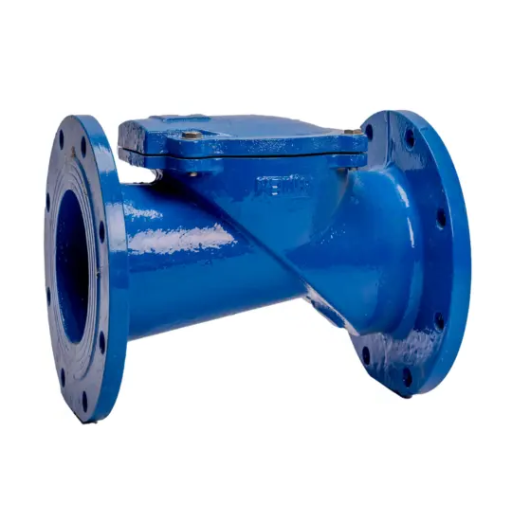
- Backflow Prevention: Check valves are built to permit fluid passage in a single direction only, preventing backflow. This is critical in systems where reverse flow can be damaging to the equipment or operations.
- System Effectiveness Preservation: Since the flow is one directional, check valves help keep the pumps primed and functional, improving system effeciency and increasing fuel savings.
- Lower Risk of Contamination: For fluid systems containing sensitive materials like chemical processing or water supply, check valves prevent fluid reversal into supply lines, avoiding cross-contamination.
- Operational Check: Check valves function automatically without any manual effort or external power source, which makes them reliable for small and large applications and increases their cost-effectiveness.
- Rugged Design: Check valves made from stainless steel, brass or PVC are highly durable due to withstanding high pressures, varying temperatures, and corrosion. This leads to a long life span and less maintenance required.
- Reduced Operational Costs: Preventing damageable pressure surges or water hammer effects brought by reverse flowing water helps check valves mitigate added stress on critical system components, prolonging their operational life.
- Integrated Strainer Functionality: Many check valves have an integrated strainer that filters unwanted particles from the fluid and thus prevents the system’s smooth operation from blockages.
- Versatility Across Applications: Check valves are used in many industries, such as oil and gas, water treatment, plumbing, and HVAC systems, because they adapt to various rates of flow, pressure, and even mediums.
- Cost Efficiency: Check valves offer a cost-effective approach to maintaining fluid control systems because they reduce damaging the equipment, reducing operational downtime, and requiring minimal maintenance.
- Compliance With Safety Standards: Many of the industrial check valves produced are built with set operating limits, ensuring proper functioning for a particular critical application.
How Check Valves Play a Vital Role in Flow Control
Check valves are ubiquitous in various industries because of its reliable ability to allow flow in one direction while preventing reverse flow. Due to recent advancements in materials and check valve manufacturing techniques, the performance metrics continues to improve. For example, modern elastomers and polymers used in check valves ensure greater durability and resistance to harsh chemicals, and some models are even tested to withstand pressures of up to 10,000 psi in oil and gas applications. In addition, innovations such as low-cracking pressure valves have enhanced flow efficiency by reducing energy expended while overcoming resistance in piping systems.
As modern industry data suggests, check valves are prominent in water distribution networks, where they are useful in mitigating the water hammer effect by ensuring constant steady flow in one direction. This functionality supports mitigating stress in the system, thus increasing the infrastructure lifespan, and reducing the maintenance costs. Advanced designs such as the spring-loaded silent check valve enhance check valve functionality, eliminating fluid surge noise in commercial and residential systems. Above all, these features check valves enable better-optimized process efficiency in diverse industries.
Using Check Valves in Different Industries
- Industrial Systems: Check valves are necessary in industrial fluid systems such as water treatment and chemical processing plants. They keep backflow from mixing with clean water or interrupting chemical reactions. For example, a 2021 study in Industrial Water Management showed a 15 percent contamination risk reduction when high-performance check valves were used.
- HVAC Systems: Check valves are important in HVAC systems, as they control airflow and help maintain the integrity of the system. Research shows that properly placed check valves can increase system efficiency by 12 percent due to stable pressure and prevention of backflow air leakage.
- Oil and Gas Industry: Check valves are vital for backflow prevention in oil pipelines, which can lead to expensive system shutdowns or dangerous spills. Industry reports show that check valve upgrades in pipeline systems have cut maintenance needs by 20 percent over five years.
- Medical Devices: Precision check valves are utilized in medical devices like IV systems and respiratory aids to control fluid or air flows in a singular direction. According to a report by the Biomedical Device Association, the implementation of advanced check valves in respiratory machines increased their air delivery accuracy by 18%.
- Irrigation Systems: In farming and irrigation systems, check valves help control the flow of water and avoid pollution of water sources. According to a 2022 agricultural engineering study, farmers utilizing modern check valves recorded a 25% increase in irrigation efficiency.
- Fire Protection Systems: Check valves are often used in fire suppression systems to allow the system to be on standby and restrict the flow of fire extinguishing agents to one direction. Research has indicated that well-maintained check valves improve efficiency by decreasing agent delivery delays by 30%. In turn, this enhances emergency response effectiveness.
Contrasting Check Valves with Gate and Butterfly Valves
All check valves, gate valves, and butterfly valves serve very important functions in fluid control systems, but each is very different in the application and mechanics of use. Check valves are made to sustain a flow in one direction, opening, and closing automatically due to pressure differences. This helps avoid backflow in systems like chemical processing and wastewater treatment. Gate valves, on the other hand, use a rotatably mounted rising or lowering element as a gate. Compared to check valves, they allow less restriction to fluid flow when in the open position fully. For this reason, they are used in oil and gas pipelines which require unrestrained high volume flow. Gate valves are not optimal for frequent operation because the parts can wear out after repetitive work over time.
Butterfly valves are used to control HVAC systems and water distribution networks and maintain compact design and fast operation. They are commended for their swift action, which is achieved through the rotating disc that regulates flow. When compared to check valves, butterfly valves offer the ability for manual or automated control, thereby adding versatility. According to research conducted in the field of fluid dynamics, gate valves have greater pressure drops than butterfly valves, which do show slight leakage in high-pressurized conditions when not maintained. Check valves make up for the leakage by not requiring operator intervention and are more efficient in energy consumption as they do not rely extensively on external control devices.
When assessing maintenance provisions needed on a butterfly valve, it’s best to take note that their design is simple which greatly lowers upkeep compared to other types. Gate valves provide more flexibility due to their larger number of moving parts, but do require more frequent attention to remain usable. Under standard operational conditions, these components make check valves the ideal choice due to a lack of manual addition to the structure. Recent developments in material science have enhanced the sealing and wear resistance capabilities of all three types of valves, resulting in prolonged lifespan when used in demanding environments.
What Are the Major Disadvantages of Check Valves?
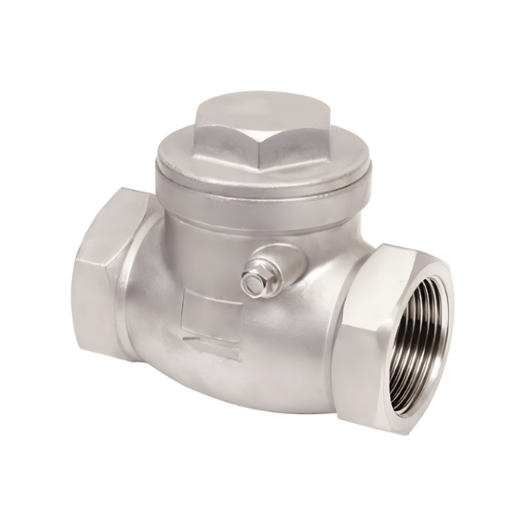
A check valve has several disadvantages that can affect their performance and reliability. One of these issues includes vulnerability to wear and failure in systems with high frequency pressure fluctuations or flow reversal because it damages the internal components. Moreover, some debris and particles within the fluid can inhibit the valve from fully closing and cause it to backflow which reduces efficiency. Some designs also possess higher opening pressures, which limits their application in low-pressure systems. Other suggested approaches, including maintenance and system design, can effectively eliminate these potential drawbacks.
Common Causes of Check Valve Failure
- Wear and Tear: Recurrent repetitive closing and opening of a check valve results in wear and tear of the repetitive components, including the disc, the seat, or even the hinge pin of the check valve. This problem, which is more severe in high-use applications, may result in a check valve not performing at its maximum efficiency.
- Corrosion: A harsh environment and corrosive fluids can weaken the valve’s strong components. Prolonged use of materials deemed unfit for the operating medium results in pits, cracks, and even complete breakdown of the material.
- Fluid Contamination: Particulates, debris, or sludge accumulation within a system can prevent contaminants from being expelled, free movement of the valve and therefore a proper seal cannot be achieved and the valve may not be able to function at all. Often results in leakage or getting the system backflow issues.
- Improper Installation: Misalignment, excessive tightening, and incorrect positioning of the valve in the system can affect its proper functioning. Facing the wrong direction relative to the flow direction could worsen the situation and further hinder diminishing performance.
- Water Hammer: Flow acceleration and pressure spikes produce hydraulic shock that can damage the valve’s internal structure and components. This is especially true for systems with the valve slamming shut repeatedly because of rapid fluid reverses.
- Valve Sizing Issues: A check valve that is either too big or too small relative to the system’s flow rate induces inefficiency and failure very early on. For instance, an oversized check valve may operate inconsistently, and an undersized one would be overloaded and stressed a lot.
- Temperature Extremes: A check valve operating under conditions at which its temperature exceeds limits can lead to deformation of the material, failure of the seal, or brittleness, depending on its composition.
- High Cycling Fatigue: Frequent cycling activities like in applications may cause fatigue failures in moving parts such as springs or hinges in the valve. This is especially of concern in oscillating or reciprocating flows systems.
- Ignoring the Operating Condition: Failure can happen much quicker when materials are not compatible with the chemical properties of the fluid and operating conditions. For example, elastomeric seals will fail at aggressive chemicals or extreme heat, resulting in seals or gaskets failing due to leakage.
- Part Not Servicing: Not performing regular cleaning, inspection, and lubrication increases the severity of all other problems mentioned above like wear and tear, corrosion, and contamination. Regular maintenance is needed to maintain reliability and longevity.
Control System Disc Check Valve Shortcomings
- Drop in Pressure: Check valves always decrease the pressure in the system due to the valve body parts, like a seat and disc, which incorporate pressure drop. Loss of pressure varies with the size of the valve, rate of flow, and type of check valve. Swing check valves, for example, tend to have smaller drops in pressure than spring-loaded check valves because of simpler mechanics.
- Flow Direction Dependence: Check valves have a one-directional design. They only facilitate flow in one direction. These flow constraints mean that improper installation or changes in operational flow patterns can cause backflow risks and render the valve useless.
- Response Time: Some check valves, like swing and ball check valves, have longer response times because of the physical movement of parts. In high-speed systems, these delays can be critical if the reversing flow must be controlled instantaneously to avoid damage to the system.
- Water Hammer: Overly aggressive or poorly designed closing check valves can increase water hammer problems. These sudden flow reversals, with huge pressure spikes, can potentially damage systems and decrease safety, especially in high-pressure pipelines.
- Size and Weight Constraints: Check valves can be large, heavy, and bulky, adding stress to piping frameworks with increased support requirements. Moreover, these valves may require optimized space and precise position adjustments during installation for improved functionality.
- Fouling Issues: The presence of debris, particulates, or viscous fluids will restrict the operation of the valve, leading to rough automated movements. Check valves are susceptible to fouling in fluids that contain certain solid items. Incremental growth around the valve disc or seat can get stuck to the valve and cause leakage or failure by being unable to maintain its seal effectively.
- Noise and Vibration Problems: Anytime rapid cycling or unstable flow conditions occur, vibration and noises can emanate from check valves. These issues are disruptive to system operations and may require extra dampening solutions. In certain environments, check valves can produce sound and vibrations.
- Check Valve Material Restrictions: The material components that make check valves determine the scope of fluids and temperatures they can work with. Using inappropriate materials in check valves would lead to faster depletion from increased corrosion stains, erosion strips, or material fatigue in aggressive chemicals.
How to Select the Appropriate Check Valve for Your Application?
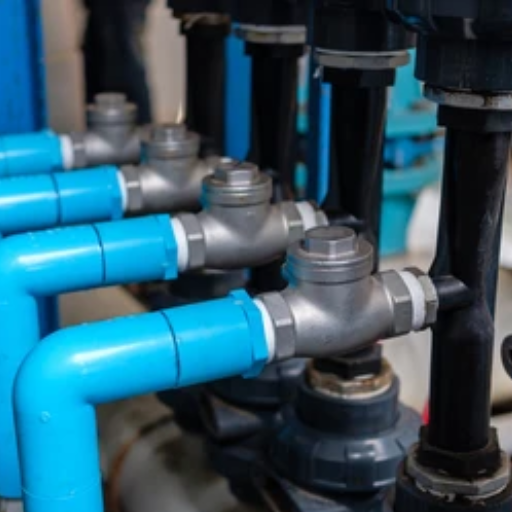
Learn About Application Specifics
These steps ensure that the check valves are optimized for the user’s operational demands. Identify your system’s specific requirements, such as temperature, fluid type, pressure range, and flow rate.
Pick a Valve Type Based On Its Functioning
Select a valve type that aligns with the application based on your system’s parameters. For example, swing check valves are suitable for low-flow conditions, whereas spring or piston check valves are ideal for high-pressure or fast-closing applications.
Check Compatibility of Materials
It is critical to evaluate the fluid and environmental conditions associated with the system before selecting valve materials. Using bronze or stainless steel prevents corrosive, erosive, or degradation impacts.
Look At System Positioning and Available Room
Consider the functional space available for installation and the orientation. Some check valves have unique mounting orientation requirements for effective operation, while others are designed to be space-saving.
Check For Need Of Maintenance And Resistance To Wear And Tear
Select valves that are easy to maintain but also need a long lifespan, particularly those placed in demanding or high-cycle environments.
Now you can ensure optimal operational efficiency and reliability by following these guidelines for selecting check valves tailored to your needs.
Factors to Consider When Choosing the Right Check Valve
- Flow Characteristics and Pressure Drop
Remember to evaluate the valve’s flow coefficient (Cv) and pressure drop. A high Cv value denotes low flow resistance which is critical for maintaining energy efficiency in operations of dynamic fluid systems.
- Cracking Pressure
Cracking pressure is the upstream pressure at which the valve starts to open. Proper choice of cracking pressure avoids unnecessary pressure losses in low-pressure applications, ensuring smooth flow initiation while retaining an optimal pressure range.
- Material Compatibility
When selecting the valve’s materials, consider avoiding materials that may lead to corrosion, contamination, or structure deterioration. Commonly utilized alloys like stainless steel, brass, PVC, and other steels are appropriate for harsh chemicals and high-temperature environments.
- Temperature and Pressure Ratings
Pay attention to ensure the valve can function within the limits of the system’s temperature and pressure ratings. Operational scope, such as thermal expansion or contraction and maximum burst pressure, must also be taken into account.
- Size and Connection Types
To determine the valve size and connection type (threaded, flanged, or welded), consider pipeline specifications over ease of installation. Optimized proper sizing reduces flow restriction and enhances performance.
- Response Time
For dynamic applications, select check valves that react quickly to prevent backflow or system failures. Some check valves in high-speed flow or pulsating flow applications require almost instantaneous response.
- Orientation and Installation Requirements
Some check-type valves have particular aperture mounting restrictions, such as flow direction being vertical or horizontal, and the system must respect those. There must also be adequate access and clearance space for mounting and other routine serving tasks.
- Noise and Vibration Reduction
Pay attention to spring-loaded dampened check valves, which tend to decrease sound or vibration caused by turbulent flow or valve operation. Noise reduction designs make some locations quieter.
- Certification and Compliance
Make sure the valves have ISO, API, or ASME marks and adherence policies. Compliance with internationally accepted check and control standards allows their use in reliable and critical applications that meet safety requirements.
- Cost and Lifecycle Value
In addition to the first costs provided, also consider the value over the entire lifecycle including maintaining expenses incurred over the period of its use and longevity along with savings on energy. Valves of good quality are likely to spend less money because of reduced periods of operational unavailability.
Selecting a Valve Based on Flow Rate and Fluid Properties
Every type of valve has its advantages and disadvantages, depending on the fluid type and the flow rates of the system. For example, the management of thick fluids is done using gate or globe valves because these valves operate smoothly and do not tend to clog. In addition, they can handle high viscous fluids. Additionally, butterfly valves are very useful for low pressure systems that range from moderate to high flow rates because they are compact and shut off quickly.
Cavitation flow analyses focus on the flow coefficients (Cv) related to a valve’s flow rate. It has also been noted that Cv is an essential consideration for many systems. For example, ball valves are preferred in systems with high flow requirements, high Cv values need to be used, and lose very little pressure. If they do not, then they will have loss-inflicting results on the system. On the other hand, fluids containing particulates and/or corrosive chemicals require more durable materials like stainless steel or specialized coatings like PTFE to make sure the materials do not degrade and last for long.
Why Are Temperature Considerations and Pressure Ratings Important?
For Boilers and Steam Systems, valves need to sustain high temperatures and extreme pressure, like forged steel globe valves. These valves can withstand severe conditions. For cryogenic applications, valves need to be designed to prevent leaking at sub-zero temperatures, like cryogenic ball valves and diaphragm valves.
Choosing the right type of valve improves system reliability, reduces maintenance, and enhances operational efficiency. Therefore, it is critical to match the valve type to the fluid and system parameters.
How To Make Sure the Check Valves Are Designed Correctly For The Application
Meeting specific application requirements for a check valve means considering a few critical parameters. Start by analyzing valve material. It needs to sustain grade A degradation due to temperature, chemicals, and any other factor. Stainless steel is a go-to material because it is known to withstand corrosion and deterioration, making it ideal for uses in chemical processing and wastewater management.
Also, evaluate the cracking pressure, the upstream pressure that must be applied before the valve can function. Standard opening or cracking pressures often lie between 0.1 psi up to a few psi, depending on the kind of valve and its uses. Choosing the correct cracking pressure facilitates proper flow regulation while preventing inefficiency or damage to the system from backflow.
Another important factor to consider is flow rate capability. Modern check valves are manufactured with flow rates represented in CV values, which denote the level of efficiency the valve has on specific flow rates. Choosing the right valve for your system with the appropriate CV value ensures that pressure drop is minimized and fluid flow is smooth.
Finally, compliance with other industry standard certifications such as ASME or API 598 and ISO should be considered. These standards guarantee that the valve will be subjected to rigorous scrutiny regarding safety, quality inspection, and performance reliability, further justifying their use in more demanding applications like oil, gas, aerospace, or even pharmaceuticals. Alignment of such parameters with system requirements ensures sustained operational efficacy over time.
What Maintenance Requirements Do Different Check Valves Have?
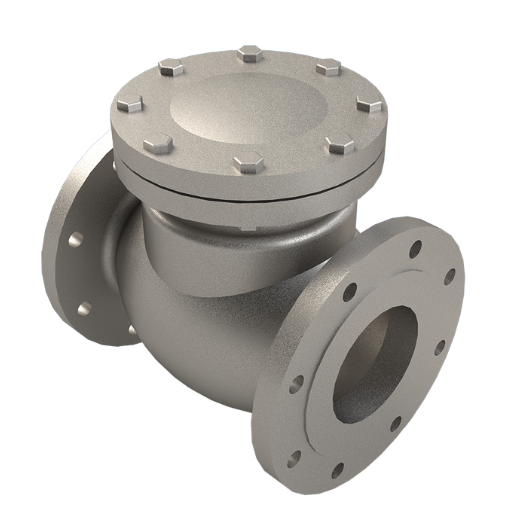
The maintenance strategy for check valves hinges upon the type of valve and the environment in which it operates. Swing check valves require regular checking of the discs for dirt or debris and lubricating the pivot parts that aid movement. To avoid excessive leakage and wearing of the discs under high pressure, Lift check valves may require inspection of the seats and discs. Dose-spring and dual-plate check valves require examination of their springs and hinge pins for signs of stress or corrosion. For enhanced efficiency and longevity of the valve, routine maintenance should also comprise cleaning and checking alignment and vibrations or pressure fluctuations in the system.
Warning Symptoms for Checking Your Check Valve
- Continuous Dripping: One of the most popular symptoms of an ineffective check valve is continuous escaping fluid which occurs even after normal maintenance. This might suggest decomposition of some parts like the seat, valve disc, or sealing surfaces being inflicted or damaged.
- Violations of Steadiness in Motion: Continuous sound or abnormal vibration in the valve’s operation indicates exceeding the norm. This could be excessive internal components or rough system pressure, which indicates change.
- Significant Resistance While Opening or Closing: Issues with smooth internal motion of the valve may arise due to an obstruction or a malfunctioning spring, leading to possible replacement if repairs prove futile.
- Determining Corrosion or Material Degradation: Deterioration in valve materials such as dependency on harsh chemicals or high temperatures can render valves non-functional. Increased structural weakening translates to increased lethargy which means replacement.
- Deteriorating Performance Efficiency: Internal damage might lower the pressure downstream leading to decreased flow efficiency. Increased energy usage to maintain flow may also signify lethargy and malfunction.
- Occurrence of Backflow: Flow reversal is an issue that needs to be solved instantly. If not dealt with promptly, major damage may be caused to the system, leading to the need of valve replacement.
- Needs Frequent Maintenance: Increased maintenance frequency might indicate that the valve is reaching the end of its life, which triggers debate over cost-effectiveness and prompt replacement.
- External Damage or Cracks: When visible deformation, such as cracks, appears on the valve, replacement is needed. Structural failure accompanied by such physical damage requires immediate intervention to maintain system integrity.
Maintenance Steps to Increase Check Valve Lifespan
When it comes to check valves, I emphasize standard maintenance practices and routines to enable working toward a specific outcome. This includes maintaining cleanliness and removing all potential obstacles, ensuring all proper installation and alignment protocols are followed, vacant allotments of space, and lack of operational debris. Furthermore, I track the operating pressure, temperature, and other relevant parameters, keeping them within range—focusing on system limits defined for the check valve, as unchecked use could worsen the outcomes.
Reference sources
Study 1: “Performance Analysis of Check Valves in Hydraulic Systems” (2020)
This study evaluates the operational efficiency of check valves in high-pressure hydraulic systems. The researchers employed computational fluid dynamics (CFD) simulations to analyze flow characteristics and pressure drops across various valve designs. Key findings highlighted that while check valves effectively prevent backflow and maintain flow direction, they can introduce significant pressure losses under certain operational conditions. The study further emphasized that material selection and valve geometry heavily impact durability and performance.
Study 2: “Material Fatigue and Failure Modes in Industrial Check Valves” (2021)
Focusing on the long-term reliability of check valves, this research utilized accelerated fatigue testing under varying temperature and pressure conditions. The authors identified common failure modes, including seat deformation and cracking in high-stress environments. Advantages such as minimal maintenance requirements and low cost were noted; however, disadvantages like susceptibility to cavitation and erosion in specific applications were documented. The authors suggest improvements in material engineering to mitigate these drawbacks.
Study 3: “Energy Efficiency Analysis of Modern Check Valve Designs” (2023)
This paper explores innovative check valve designs aimed at reducing energy losses. Through experimental testing and real-world application data, the study found that advanced designs incorporating optimized flow paths and low-friction materials can improve overall system energy efficiency by up to 15%. However, the complexity and higher manufacturing costs of these designs pose challenges for widespread adoption.
Frequently Asked Questions (FAQs)
Q: What is the primary function of a check valve in control valve systems?
A: The primary function of check valves is to prevent backflow in a piping system. Unlike other control valve types, check valves operate automatically without external power, opening when flow moves in the desired direction and closing when flow attempts to reverse. This self-operating mechanism makes check valves essential for protecting equipment, preventing contamination, and maintaining system integrity in applications ranging from water and wastewater treatment to industrial processes.
Q: What are the main advantages and disadvantages of check valves?
A: The key advantages of check valves include automatic operation without external power, simple design with few moving parts, reliable backflow prevention, and relatively low maintenance requirements. However, disadvantages include potential water hammer effects when the valve closes quickly, limited control over flow rates (as they’re either fully open or closed), susceptibility to clogging in certain applications, and potential leakage if not properly maintained or if the valve exhibits a low pressure differential across the disc.
Q: What are the advantages and disadvantages of swing check valves specifically?
A: Swing check valves are known for their full-bore design that minimizes pressure drop and their ability to handle moderate to high flow rates. Advantages include simple design, good sealing capabilities, and suitability for horizontal installations. Disadvantages include slower response time to flow reversal (which may cause water hammer), larger installation footprint compared to other types, and reduced efficiency in vertical flow-up applications. These valves are not ideal for pulsating flows as the disc may flutter and cause premature wear.
Q: How do I go about selecting a check valve for my specific application?
A: When selecting a check valve, consider these critical factors: the media being processed (clean, dirty, corrosive), operating pressure and temperature ranges, flow characteristics (steady or pulsating), installation orientation (horizontal or vertical), required response time to prevent backflow, pressure drop limitations, and space constraints. Additionally, evaluate material compatibility with the process fluid, required certifications for the application, and maintenance accessibility. The right selection balances initial cost with long-term reliability and efficiency.
Q: What are the different types of check valves available and their specific applications?
A: Several types of check valves are available for different applications: Swing check valves work well for general service with clean fluids; Ball check valves are suitable for vertical installations and viscous fluids; Silent/Spring-loaded check valves minimize water hammer in critical systems; Lift check valves work well for high-pressure steam applications; Wafer check valves offer space-saving installation; Diaphragm check valves handle slurries and solids-laden fluids; and Dual-plate/Double-door check valves are ideal for larger diameter pipes where space and weight are concerns.
Q: How do control valve technologies differ from check valves?
A: While check valves are a type of valve that allows flow in only one direction automatically, control valves actively regulate flow parameters based on external signals. Control valves require actuators and can modulate to control the flow rate, pressure, or temperature precisely. They typically connect to control systems and can assume various positions between fully open and fully closed. Check valves, by contrast, are binary (either open or closed) and operate solely based on flow direction and pressure differential, with no ability to regulate flow parameters or respond to control signals.
Q: What maintenance considerations should be kept in mind for check valves?
A: Check valves require regular inspection for wear, proper seating, and freedom of movement. Key maintenance tasks include: periodic disassembly and inspection of internal components, checking for erosion or corrosion damage, verifying spring tension on spring-loaded models, ensuring proper seating of the closure element, and testing for reverse flow leakage. Service intervals depend on the application severity, media properties, and operational frequency. Preventive maintenance is crucial as check valves often operate unmonitored and their failure can lead to significant system damage.
Q: What are the consequences of improper check valve selection?
A: Improper check valve selection can lead to numerous problems including excessive pressure drops (increasing energy costs), water hammer effects (damaging piping and equipment), premature valve failure, leakage during backflow conditions, noisy operation, and system contamination. Additionally, an incorrectly sized valve may experience rapid wear, frequent maintenance requirements, or complete operational failure. The financial impacts extend beyond the valve replacement cost to include system downtime, repair expenses, and potential safety risks, making proper selection critical to long-term system performance.

